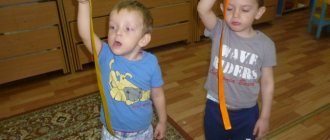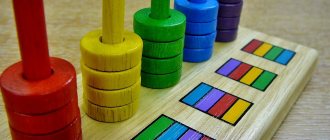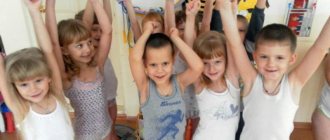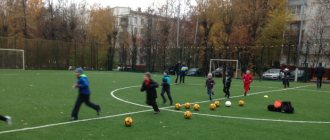Breathing exercises as a means of hardening and improving the health of preschool children
Shafikova I.M. Breathing exercises as a means of hardening and improving the health of preschool children // Sovushka. 2018. N2(12). URL: https://kssovushka.ru/zhurnal/12/ (access date: 01/19/2022).
Order No. 110417
Breath is life!
Breathing is the most important source of life. A person can live without food and water for several days, but without air, at most, a few minutes. Modern medicine believes that developing proper breathing is the key to good health. Therefore, it is important to pay great attention to developing proper breathing. The respiratory system of children is imperfect, and the smaller the child, the narrower all the respiratory tracts are, and the mucous membrane lining them is very delicate, easily inflamed, even under the influence of dust particles; at the same time, the already narrow passages become even narrower, and it becomes difficult for the child to breathe. The smaller the child, the smaller the vital capacity of the lungs, the smaller, and the need for oxygen is high, so the child breathes frequently and shallowly. That is why it is necessary to include breathing exercises in a complex of physical education and health exercises. Breathing exercises strengthen the respiratory muscles, develop chest mobility, promote deep breathing and stability of the breathing rhythm, and increase the vital capacity of the lungs. They contribute to the full physical development of children and prevent diseases of the respiratory system. Breathing exercises in preschool age are aimed at increasing the child’s overall vitality and the resistance, hardening and resistance of his body to diseases of the respiratory system.
Let's look at what are the positive effects of breathing exercises on the human body.
First of all, breathing exercises affect metabolic processes in the child’s body, improve the drainage function of the bronchi, restore impaired nasal breathing, promote the resorption of inflammatory formations, and the straightening of inflammatory formations. Breathing exercises help saturate every cell of the body with oxygen. And a person’s ability to control breathing contributes to the ability to control oneself. In addition, breathing exercises are simply necessary for children who often suffer from colds, bronchitis, as well as those recovering from pneumonia or suffering from bronchial asthma.
In order to systematically use breathing exercises, they must be included in complexes: morning exercises, physical education classes, swimming lessons, outdoor games, physical education, finger exercises, sound breathing exercises.
Techniques for performing breathing exercises for children
- take in air through the nose;
- do not raise your shoulders;
- exhalation should be long and smooth;
- after exhaling, stop for 2-3 seconds
- you need to make sure that your cheeks do not puff out (to begin with, you can hold them with your hands).
- do not strain the muscles in the neck, arms, abdomen, chest; Do not raise your shoulders when inhaling and lower them when exhaling.
With children, breathing exercises should be carried out every day in a well-ventilated room, at any convenient time of the day, excluding 20 - 30 minutes before meals and sleep and 1 hour after meals. Before gymnastics, you need to clean your nose. The duration of the lesson is from 10 to 20 minutes. It depends on the age of the children, their individual capabilities and well-being. When conducting breathing exercises with a group of children, it is necessary to take into account the condition of each child: if necessary, pause, change the pace of the exercise to a slower one, reduce the dosage in the exercise. If you feel slightly dizzy, you can suggest doing the exercise while sitting on a chair, or skip it altogether, adhering to the main principle “Do no harm.”
To teach a child to do an exercise, the teacher first needs to master the technique of performing it himself and conduct gymnastics in a playful way: by playing with the kids the exercises, “turning” into a beetle, a bee, a hedgehog, an airplane, a steam locomotive, a clock; not just by doing a breath-holding exercise, but by offering to “dive into the water,” hold your breath, hide from geese, swans, wolves, etc.
To maintain interest, you should combine exercises into a complex with a single plot, changing game techniques and motivation, for example: go on a journey through fairy tales, go to the village to visit your grandmother. To maintain the interest and attention of young preschoolers when organizing game plots in the educational process, we use visual aids - decorations, costumes, various attributes and physical education equipment.
When developing complexes, it is necessary to take into account:
— the effectiveness of each exercise for strengthening and improving the health of children;
— an accessible degree of difficulty of exercises for children of different ages;
- the degree of influence of exercises on strengthening the respiratory muscles, ventilation of all parts of the lungs, etc.
For example, I propose a set of exercises for developing nasal breathing.
- Close your mouth tightly, pressing one nostril with your finger, slowly inhale and exhale air through the other (and vice versa).
- Inhale through one nostril (the other is pressed), exhale through the other (the first is pressed).
- Inhale slowly through the mouth, exhale jerkily through the nose.
- Inhale and exhale through closed lips (the corners of the mouth are stretched).
- With your lips closed, puff out your cheeks, then, pressing your fist to your cheeks, slowly squeeze out the air through your clenched lips.
- Inhale through your nose. As you exhale, slowly pronounce the sound “mm-mm.”
For children who are often and long-term ill, I recommend using the following breathing exercises:
"Watch"
Standing, legs slightly apart, arms lowered. Swinging your straight arms back and forth, say “tick-tock.” Repeat 10 – 12 times.
"Trumpeters"
Sitting on a chair, squeeze your hands into a tube and lift them up. Exhale slowly while pronouncing the sound “p-f-f-f-f” loudly. Repeat 4 – 5 times.
"Flap your wings like a rooster"
Stand straight, legs apart, arms down. Raise your arms to the sides and then pat them on your thighs. As you exhale, say “ku-ka-re-ku.” Repeat 5 – 6 times.
"The porridge is boiling"
Sitting on a chair, place one hand on your stomach, the other on your chest. Pull in your stomach and
draw air into your chest - inhale, lower your chest (exhaling air) and stick out your stomach -
exhalation. When exhaling, loudly pronounce the sound “f-f-f-f”. Repeat 3 – 4 times.
"Pump"
Stand straight, legs together, arms along your body. Inhale, then tilt your torso to the side. Exhale, hands slide, while loudly pronouncing “ssssss!” Straightening - inhale, bend in the other direction and repeat the sound. Repeat 6 – 8 times.
"On the horizontal bar"
Standing, feet together, hold a gymnastic pack in both hands in front of you. Raise the pack up, rise on your toes - inhale, lower the pack back onto your shoulder blades - long exhale while pronouncing the sound “f-f-f-f-f”. Repeat 3 – 4 times.
"Adjuster"
Standing, place your feet shoulder-width apart, raise one arm up, and move the other to the side. Inhale through your nose, then change the position of your hands with an extended exhalation and pronounce the sound “r-r-r-r-r”. Repeat 4 – 5 times.
"Balls are flying"
While standing, raise your hands with the ball up. Throw the ball forward from your chest. As you exhale, say a long “u-h-h-h.” Repeat 5 – 6 times.
"Grow Big"
Stand straight, legs together, raise your arms up, stretch well, rise on your toes - inhale. Lower your arms down, lower your entire foot – exhale. Say “u-h-h-h-h.” Repeat 4 – 5 times.
"Skier"
Simulation of skiing. Exhale through the nose while pronouncing the sound “mm-mm-mm”.
Repeat for 1.5 - 2 minutes.
"Pendulum"
Standing, place your feet shoulder-width apart, hold the stick behind your back at the level of the corners of your shoulder blades. Tilt your torso to the sides. When bending over, exhale while pronouncing the sound “t-u-u-u-x-x-x”. Repeat 3-4 bends in each direction.
"Geese are flying"
Slowly walking around the room. When you inhale, raise your arms to the sides, when you exhale, lower them down, pronouncing a long sound “g-u-u-u”. Repeat for 1 – 2 minutes.
From all of the above, we can conclude what a huge role breathing exercises play in the hardening and healing of children and how important it is to approach this task thoughtfully and responsibly.
Literature:
- Gorbatenko O.F., Kardailskaya T.A., Popova G.P. Physical education and health work in preschool educational institutions: planning, classes, exercises, sports and leisure activities. Volgograd: Teacher, 2008.
- Podolyanskaya E.I. Forms of health improvement for children 4-7 years old: kinesiological and breathing exercises, morning exercises. Volgograd: Teacher, 2009.
- Yakovleva L., Yudina R. Preschool education. 1997. No. 2. P. 14-20.
Safety precautions
Any, even the most useful things, can become harmful if not observed in moderation. Below are recommendations for the timing of breathing exercises or the approximate number of repetitions. But since all children are different, differing in their psychophysical characteristics, it is never enough to simply follow the instructions.
The main thing is that in no case should you force a child or force him to do exercises through “I can’t.”
This will not only discourage the baby from any desire for further activities, but can also harm his health. Even if you seem to have just started, but the child refuses to do the proposed exercise, do not insist. Try moving on to something else or postpone classes altogether if none of the exercises “work.”
Of course, this could just be a whim. A sensitive parent or educator will be able to determine what the problem is based on the specific situation. I just want to warn you that in the case of breathing exercises, any coercion or forcing is fraught, and a child’s refusal may be associated with some kind of physical problem, discomfort, which he cannot express or even understand.
Meanwhile, the rule is valid for both children and adults: all breathing exercises are performed only in an absolutely comfortable mode.
You can also encounter the opposite problem: when a child, having played too much, does not notice the discomfort and “excess.” Therefore, the adult’s task is to monitor external signs of the baby’s well-being. Pay close attention to the color of his face. If you become pale or severely red, it is better to stop exercising.
Moderate blush is a healthy natural effect and should not be intimidating. Some increased breathing is also normal, but you need to make sure that it is not excessive, take breaks, and alternate more active activities with calmer ones. If your child complains of dizziness, you should also pause and wait until it stops. Usually this happens quite quickly. Moderate dizziness, which soon subsides, is also a reaction within normal limits.
All of the above fully applies to those groups of children for whom breathing exercises are usually considered contraindicated: children with disorders of the cervical spine and some other health problems. None of these are actually contraindications. But classes with such children require special care, and it is better to entrust them to specialists.
Games and exercises for breathing in verses
In kindergarten, exercises from the card index of breathing exercises in verse are actively used.
Breathing exercises in kindergarten. Card file of exercises in verse
While performing this technique, it is important for the manager to observe:
- Children inhale through their nose.
- For complete relaxation of the shoulders.
- As you exhale, it is moderate and relaxed.
- Behind the cheeks - they should not puff up.
- Based on the general condition of the child - if dizziness occurs, exercises should be stopped.
Exercise "Football"
To perform the exercise, you need a small ball and a goal (can be made from a construction set). The child’s task is to “score” a goal into the goal. The tongue should be on the lower lip at this moment.
Before the exercise, the child recites the lines of the poem:
- “My cheerful ringing ball” (during the first acquaintance with the exercise, the line is pronounced by the leader);
- “Where did you start galloping?” (then the actual execution of the exercise occurs, and after it it is necessary to
Indications and rules for conducting classes
Breathing exercises in kindergarten, a card index of various techniques for different ages - a mandatory requirement for preschool employees. Venue – any; It is very useful to carry out the complex on the street, but if weather conditions do not allow, the complexes are carried out in a group with a teacher, or in music classes.
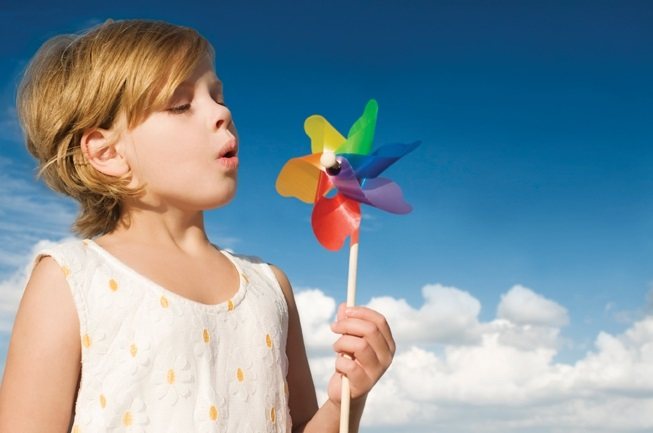
There are contraindications for some exercises. There are few of them, but the teacher needs to consult with the children’s parents to determine if they have chronic diseases.
- The exercise schedule ranges from 10 minutes to half an hour. The complexes should be performed only an hour after meals.
- A variety of toys and other demonstration materials should be used in such classes. This will increase children's motivation and interest in exercise.
- Using standard sets of exercises, you can modify them by adding something of your own and making them original.
- When weather conditions permit, it is imperative to perform the complex outdoors. If gymnastics takes place indoors, its temperature should not exceed 20 degrees.
- To achieve the best results, it is necessary to familiarize the children’s parents with the exercises so that they can practice regularly at home.
Gymnastics on the street while walking
An excellent solution is to do breathing exercises for children while walking. In the open air, the lungs are better saturated with oxygen than in enclosed spaces. Exercises outdoors should be done in warm weather so that the child does not catch a cold.
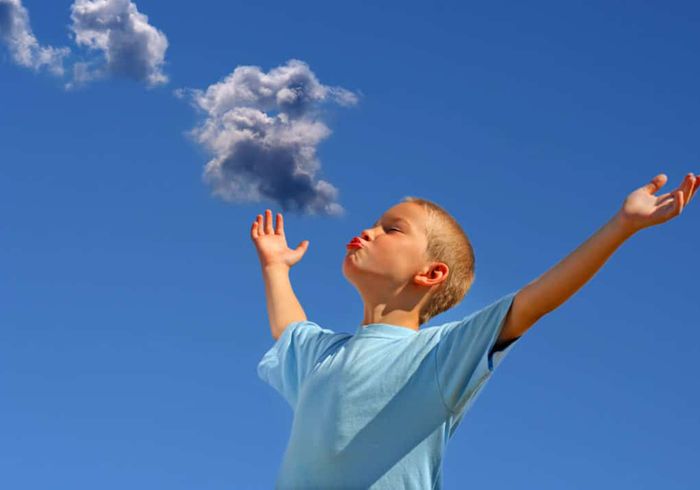
Examples:
- "Cold". Legs apart, arms to the sides. Quickly cross your arms in front of you, clapping your palms on your shoulders and saying “uh,” and then move them back.
- "Who is taller" . As you inhale, rise onto your toes, arms up. Stretch as high as possible. As you exhale, stand on your full foot, arms down.

